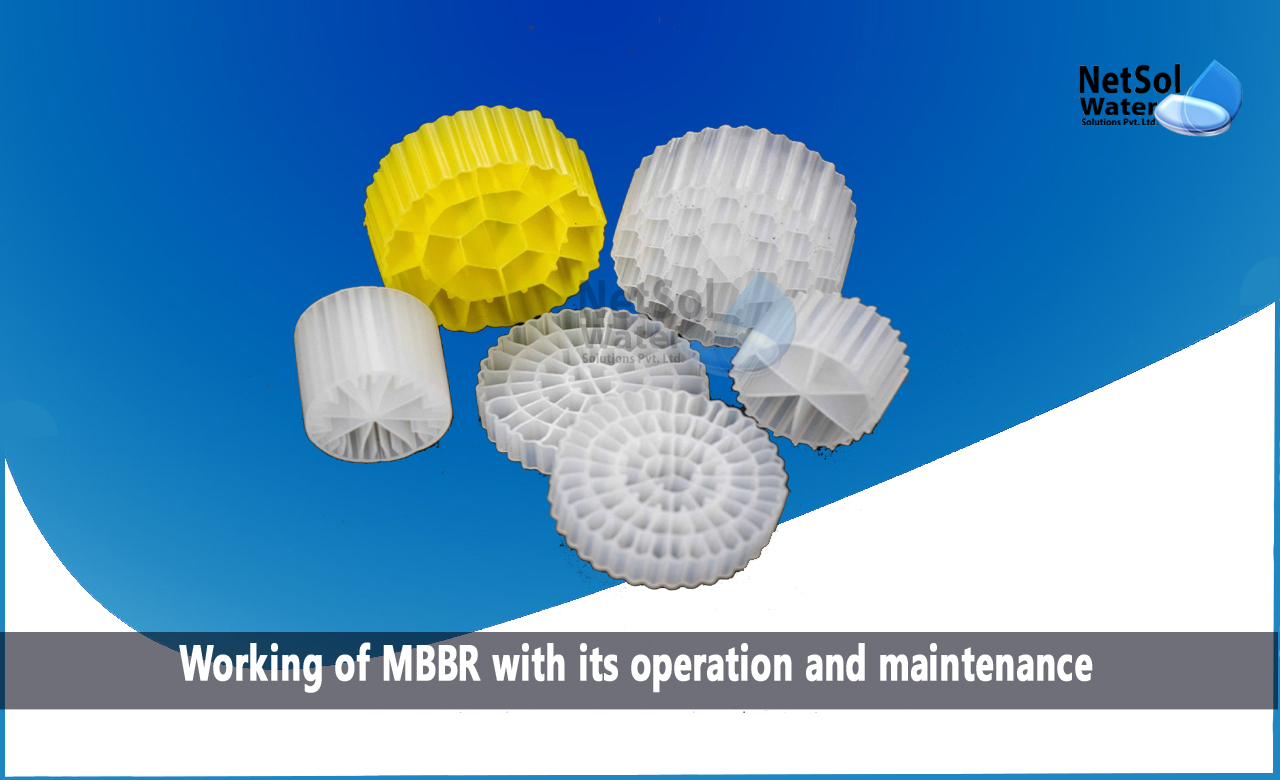Working of MBBR with its operation and maintenance
MBBR is a highly efficient biological cleaning procedure that combines the, use of biofilm medium and the conventional activated sludge method.
In aeration and anoxic tanks, the MBBR process makes extensive use of microorganism floating medium. The medium gives biological bacteria a larger surface area on which to attach and develop. The space needed for the tank to treat the sewage is reduced, as the surface area increases. The processing procedure can be either aerobic or anaerobic and can handle large loads.
Let’s understand the concept of MBBR, its working, operation and maintenance.
MBBR Technology in Sewage treatment plants
By attaching a carrier for the accretion growth of biofilm, MBBR makes use of the entire tank's capacity for biomass growth. The carrier can move because the bubbles are being stirred up. Depending on how full the carrier is, the reactor can take on any shape and can support a variety of loads.
Working of MBBR in sewage treatment plants
The MBBR method increases the number of microorganisms accessible to remediate sewage, by suspending plastic carriers (mediums) in activated sludge tanks. Thus, microorganisms will consume the organic stuff. The surface area that biological microorganisms can cling to, and thrive on in the aeration tank, is increased by this medium.
The space needed for the tank to treat the sewage is reduced as the surface area increases. As oxygen is added to the bottom of the first chamber of the aeration tank, the medium is continuously moved by air bubbles from the aeration system. Compared to conventional secondary processing, it provides greater efficiency and value.
The key components of an MBBR system are sieving, sludge treatment, inflow balance, maintenance of the integrated control system, and sewage treatment facility. Pump and blower operations must be regularly monitored by qualified persons. A process in MBBR technology keeps biofilm levels constant.
Advantages of MBBR
· Improved treatment effectiveness
· Full solids removal
· Better sedimentation properties
· Action involving more floating biomass
· Concentration that lengthens the duration that sludge is retained
· Enhancement of process stability
· Loss of low pressure
· No channelling for filters
· Regular backwash is not necessary
· Reduces sludge production and has no issues with replenishing sludge.
Operation and maintenance of MBBR
MBBR does not need sludge return or backwashing for continuous use. The operation of the sewage treatment tank is affordable, because of the aeration of course, air bubbles in the aeration zone. Stirring reduces congestion by moving the carrier throughout the service continuously.
Conclusion
For usage in aeration tanks, MBBR media carriers are a great option. As they circulate around the tank, their bacteria aid in the digestion of the solid waste. The media's design offers a ton of surface space for beneficial microorganisms to settle, boosting the number of bacteria that are available to digest waste.
How can we assist?
Netsol Water is the best manufacturer of water and wastewater treatment plants in India. We provide advanced treatment methods in sewage treatment plants and effluent treatment plants.
With the help of innovation and market expertise, we can outperform the competition and improve daily operations. Due to our organization's wide range of skills and credentials, the MBBR approach is the best choice for sewage treatment plants. For further information, contact us at +91 9650608473 or email at enquiry@netsolwater.com



